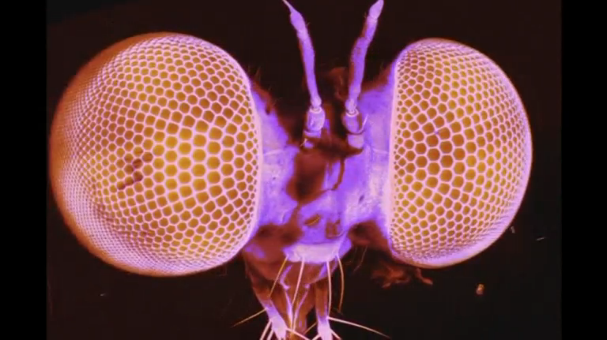
CAMBRIDGE, England, United Kingdom (Reuters) — A small fly the size of a grain of rice could take the title of Top Gun of the insect world after Cambridge scientists identified its remarkable ability to detect and intercept its prey mid-air, changing direction mid-flight if necessary before sweeping around for the kill.
The robber fly Holcocephala is relatively small - at 6 millimeters (mm) in length but can spot and catch prey more than half a meter away in less than half a second. Even if the prey changes direction, the predator is able to adapt in mid-air and still make the kill.
“Robber flies are predatory insects, same as dragon flies are, and yet some of the robber flies are only 3mm long and we wanted to know how come they can do this predatory behavior being so small,” said Dr Paloma Gonzalez-Bellido from Cambridge’s Department of Physiology, Development and Neuroscience. “There are other flies as well that are predatory and we work with them in the lab but their eyes don’t look like robber flies’ eyes so we knew that this species was doing something really special,” she said.
The researchers caught the activity with high speed cameras by tricking the fly into launching itself at a fake prey – in fact, just a small bead on a fishing line.
Like all flies, the robber fly has compound eyes made up of many lenses – but its eyes are incredibly sophisticated, having several thousand lenses in each in a range of sizes, from just over 20 microns to around 78 microns - the width of a human hair.
The larger lenses are the same size as those of a dragonfly, which is believed to have the best vision of all insects but is 10 times larger, and help reduce diffraction which would otherwise distort the image.
“Because it has these large lenses it can see prey at a long distance away and so consequently it can sit and wait for a prey to come past and then take off after it. And so it’s a combination of the acuity of the eye but also it’s behavioral adaptations as it flies it can track where the prey is and intercept it and change its behavior during flight because of its highly acute visual system,” said co-lead author of the study, Dr Trevor Wardill.
When it sees a potential prey, the fly launches itself upwards while maintaining a ‘constant bearing angle’ moving towards an intercept point rather than at its prey directly.
“We have to leverage a whole bunch of computational power just to analyze all of this and they do it real time. So if the prey, in this case we had times where we would trick the prey. We’d have the bead going across and then we’d have it reverse and the whole time the animal knows exactly where its prey is. It will change its trajectory if the prey changes trajectory to match perfectly,” Wardill said.
The researchers believe the robber fly’s sensory system, which maximizes precision in its vision while minimizing the amount of information needing processing, is the key to its ability to capture prey as accurately is it does while retaining such a small body size.
This technology could be harnessed by man-made flying robots, or drones, they say.
“We could actually try to basically replicate this and put it in a robot and see if it will actually fly and if it will do the task properly and successfully. If it does there are two good things about it. One we now have a robot that can do the behavior successfully to take out other drones for example but also it means that we understand it. So often biology is so complicated that you have a finding and it is very difficult to know whether that your interpretation of that finding is correct. So this will be quite neat to be able to test that,” Gonzalez-Bellido said.
The research was largely funded by the United States Air Force Office of Scientific Research and the United Kingdom’s Biotechnology and Biological Sciences Research Council, and was published in the journal Current Biology.








